AS Monaco is a footballing institution known for unearthing gems and moulding them into world-class talents. With a storied history of league titles and European glory, Monaco has consistently adhered to a philosophy of blending experienced stars with homegrown prospects and talented youngsters.
The Monaco youth system has been the development ground of many iconic French footballers, such as Thierry Henry, Lillian Thuram and Emmanuel Petit. Some famous names to come through the AS Monaco youth system more recently include the likes of Kylian Mbappe, who was imperative in their 2018/19 Ligue 1 title campaign, contributing 15 league goals that season. Midfielder Khéphren Thuram has gone on to make a name for himself with some impressive performances at OGC Nice. In January 2023, defender Benoît Badiashille signed for Premier League side Chelsea.
Many of these players often leave Stade Louis II for significant sums of money. Although Monaco’s commitment to cultivating youth talent isn’t solely driven by financial pragmatism, the €180m fee brought in through Mbappe’s move to PSG allowed for significant reinvestment and rebuilding of the squad.
In this tactical analysis and scout report, we set our sights on three players in the Monaco youth system who will most likely go on to make an impact at Stade Louis II and beyond. We will highlight the critical aspects of each player’s style and what they could offer Monaco’s tactics in the future.
Saïmon Bouabré
The first player we are going to look at is 17-year-old Saïmon Bouabré. The youngster is primarily a central midfielder who can play a little higher as an attacking midfielder or out wide on the left wing.
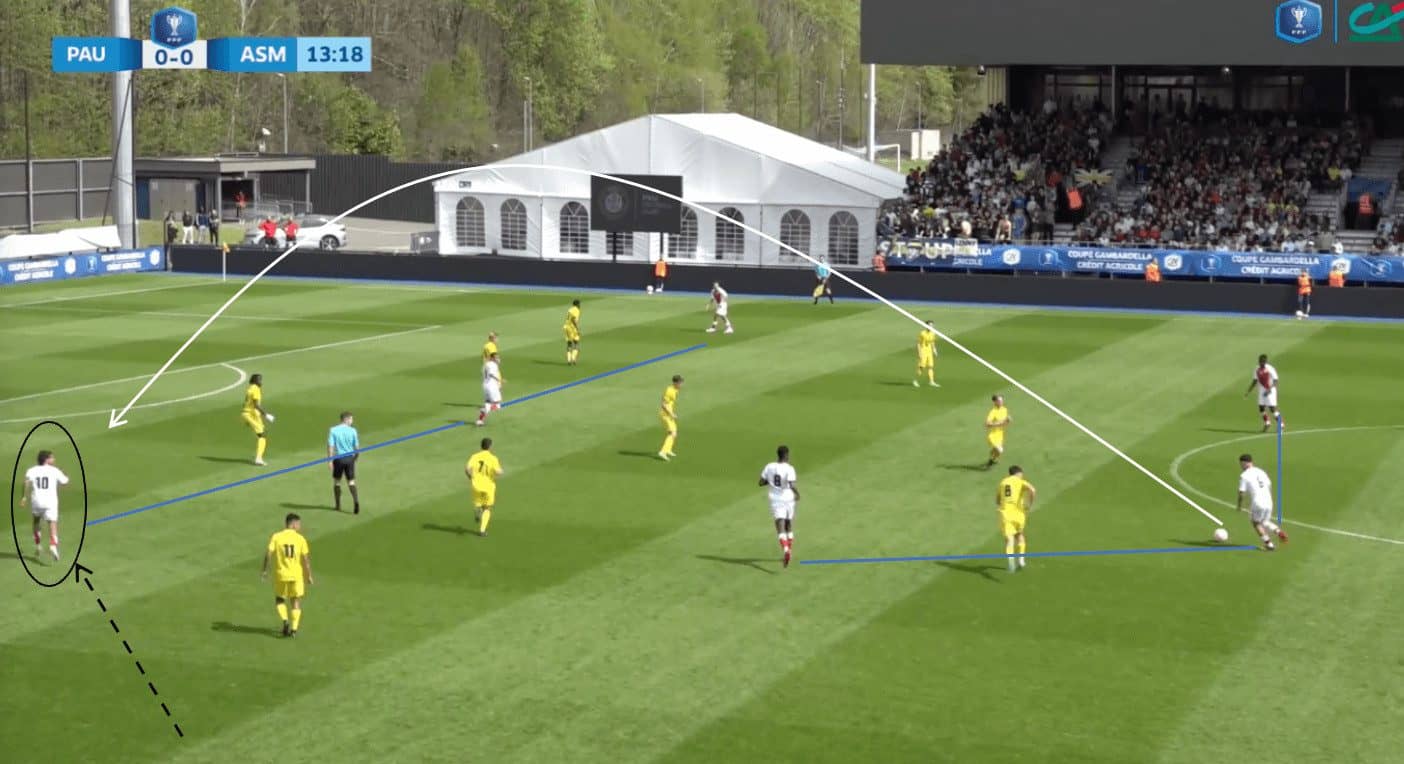
Bouabré is a player who automatically looks to utilise his speed and attacking attributes whenever possible. Monaco’s youth teams mostly use a 4-3-3 formation; when deployed as a winger, he likes to play on the left, which enables him to cut inside onto his favoured right foot. When playing as a midfielder, he looks to make runs forward and take up positions between the opposition lines.
He consistently makes runs to get beyond the opposition defence, allowing the holding midfielder(s) to look for him via a pass over the top of the opposition defence, as we can see above. In this scenario, he is playing on the left and making runs into the middle from the wide area. Making these inverted runs leaves space for the fullback to make overlapping runs down the flank, which stretches the opposition’s defence and creates gaps for Bouabré to exploit.
He has an excellent ability to take up good positions in the half-spaces, which often proves crucial in breaking down compact defensive formations. By infiltrating the half-spaces, he ensures he can receive the ball in dangerous positions, thus enabling him to run at his opponent and then take a shot at goal or deliver key passes to onrushing teammates.
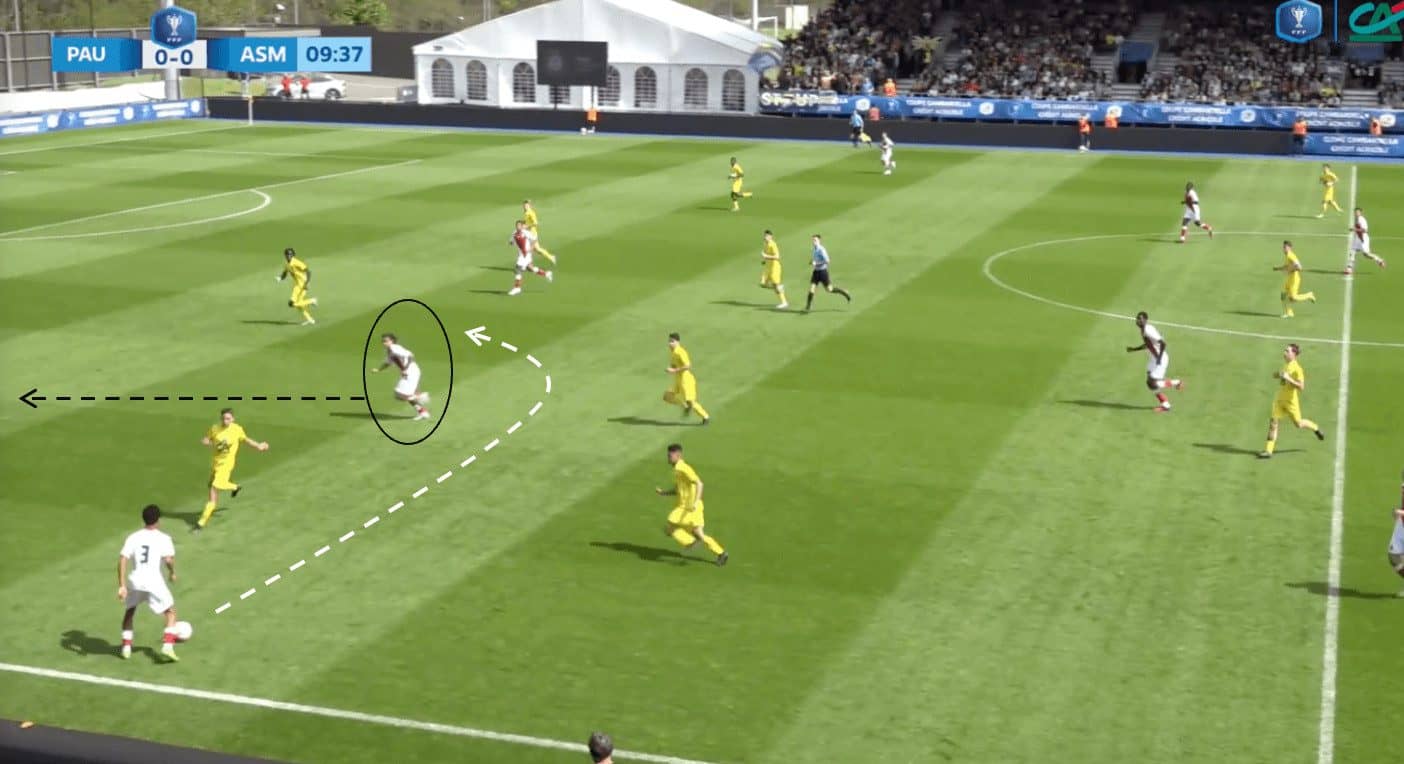
Furthermore, Bouabré makes some valuable off-the-ball runs into the wide areas. He is able to link up well with the fullback, which often draws one or two opposition players out of position and creates space for others to exploit. Bouabré is at his best when given the freedom to roam between the wide areas and pockets of space in central areas. Here, we can see him making a run towards the left flank, which allows the fullback to carry the ball into the space left by Bouabré.
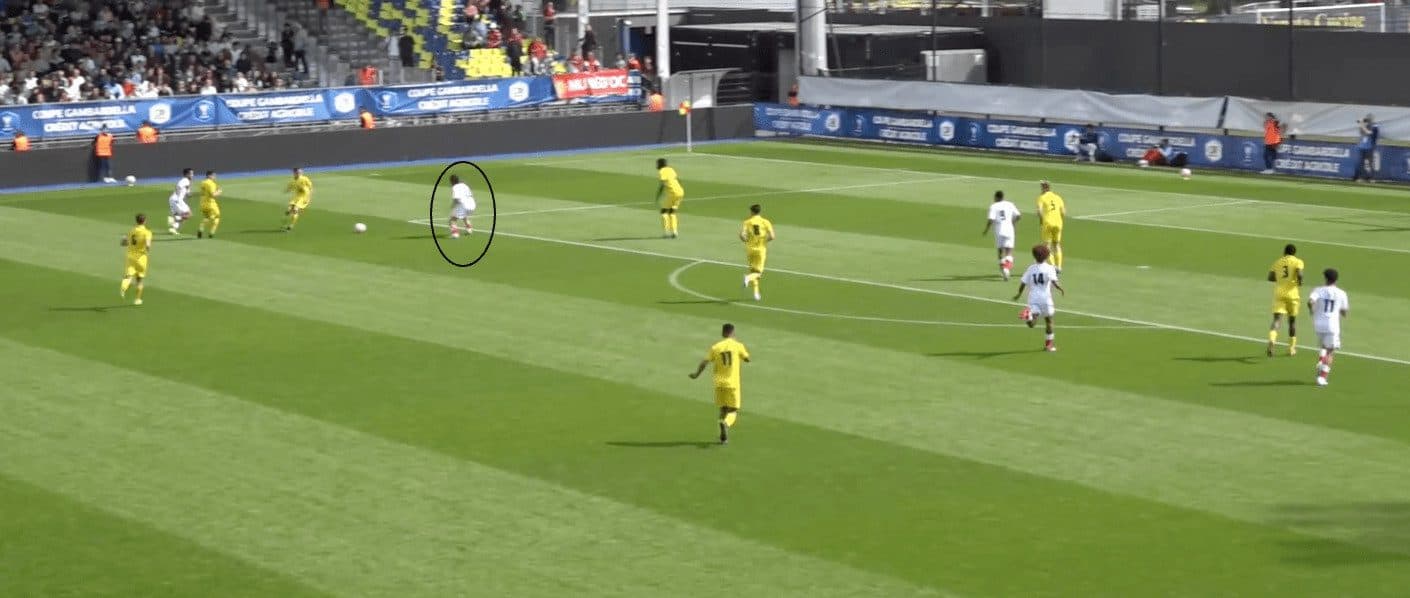
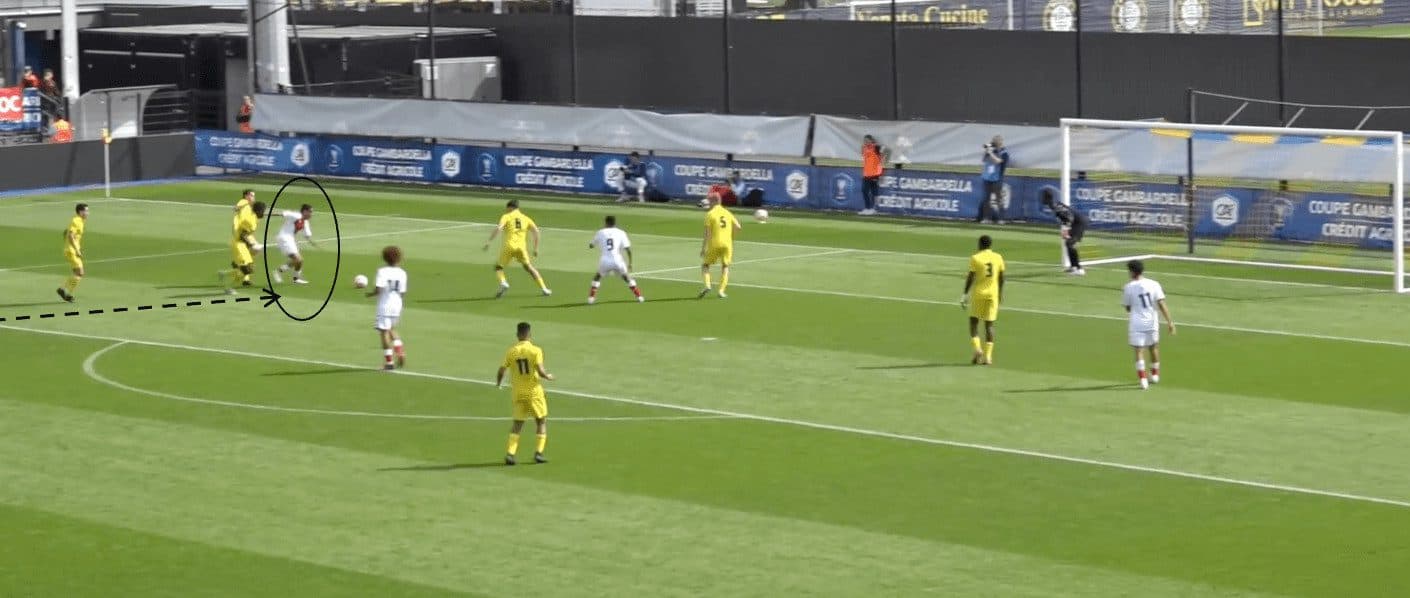
The Monaco starlet possesses swift feet and close control, which means when he receives the ball in pockets of space such as this, he can easily weave in and out of tackles. Standing at 1.74 metres, Bouabré is not the tallest of players; therefore, he has quite a low centre of gravity, making it difficult for opponents to hustle him off the ball.
His outstanding 1v1 ability and dribbling skills can effectively penetrate the opposition’s defensive line, creating goalscoring opportunities for himself and his teammates. With 0.78 take-ons per 90, he doesn’t always look to dribble beyond his opponent and will also utilise link-up play and quick combinations to get into the opposition area.
Moreover, his dribbling ability enables the team to look to him to advance the ball up the field swiftly, thus facilitating effective transitions from defence to attack. Bouabré’s ability to retain possession and carry the ball forward with speed and control can catch the opposition off guard, leading to quick counterattacks and offensive transitions.
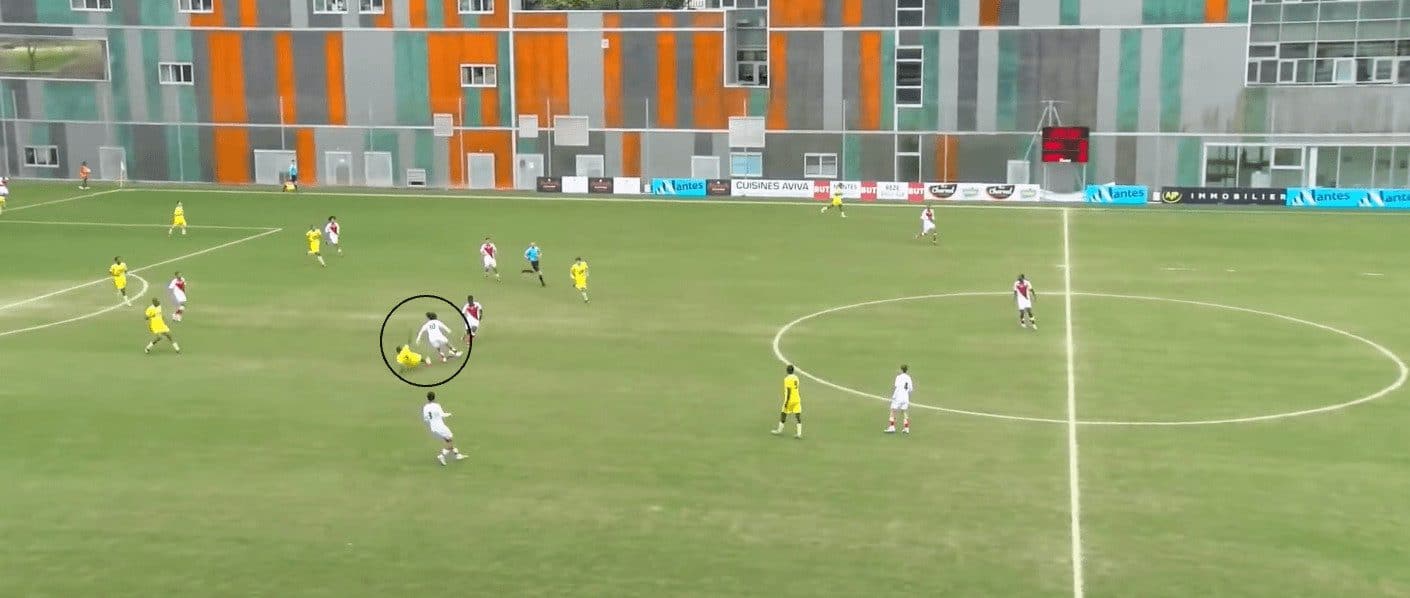
Additionally, his speed comes in useful defensively, too. He uses his acceleration to track back and prevent the opponent from launching a counterattack. Despite his relatively small frame, he possesses a fair amount of strength, which enables Bouabré to constantly hustle press his opponents into making errors or losing possession.
Plus, he demonstrates good use of his body positioning and orientation to block passing lanes and prevent the opposition from building attacks through central areas. His speed also means he could be utilised in a high-pressing system, as he has good defensive awareness and a willingness to work hard for the team.
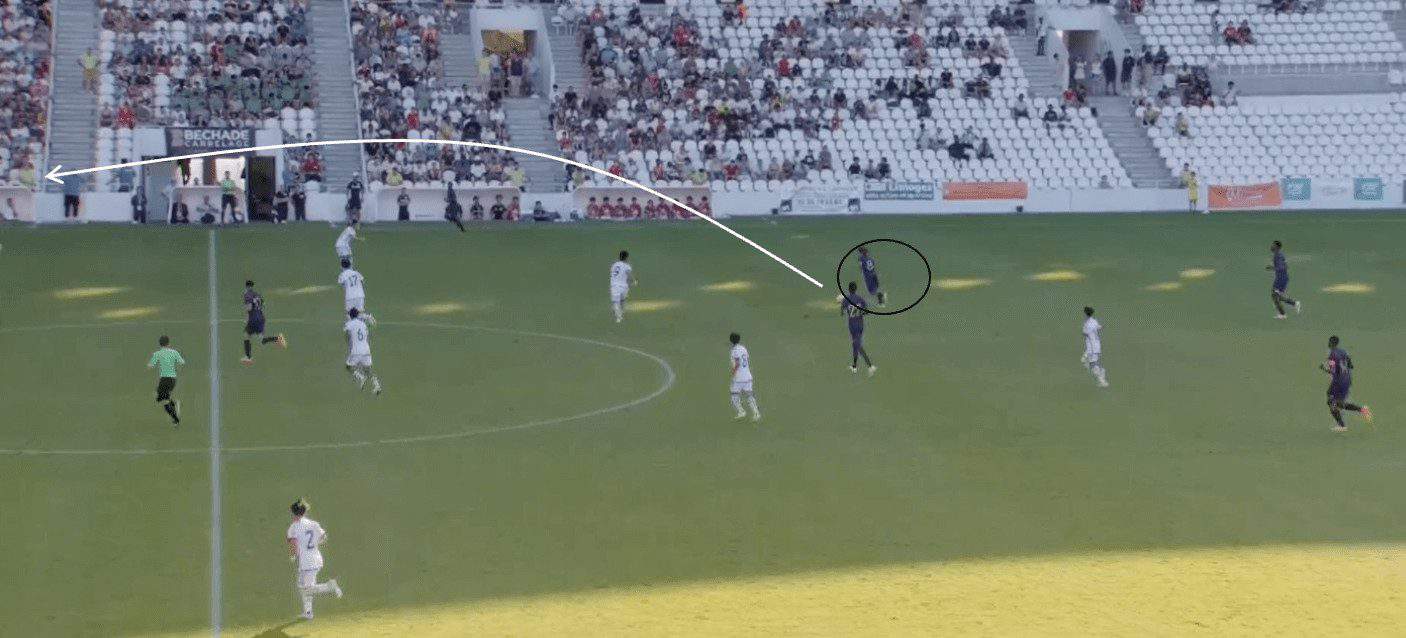
When playing in recent games for France U18s, Bouabré has been utilised in a much deeper role. Here, we can see him dropping back into his own half to pick up possession. Whilst this does limit his attacking influence on the game, it does allow his passing ability to be on show. He has a good eye for a pass and can play passes over the top into the path of the forwards looking to beat the offside trap.
Samuel Kondi Nibombé
The next player we will look at in this analysis is 16-year-old Belgian defender Samuel Kondi Nibombé. The youngster recently signed for Monaco after spending time in the youth systems of Anderlecht and Charleroi.
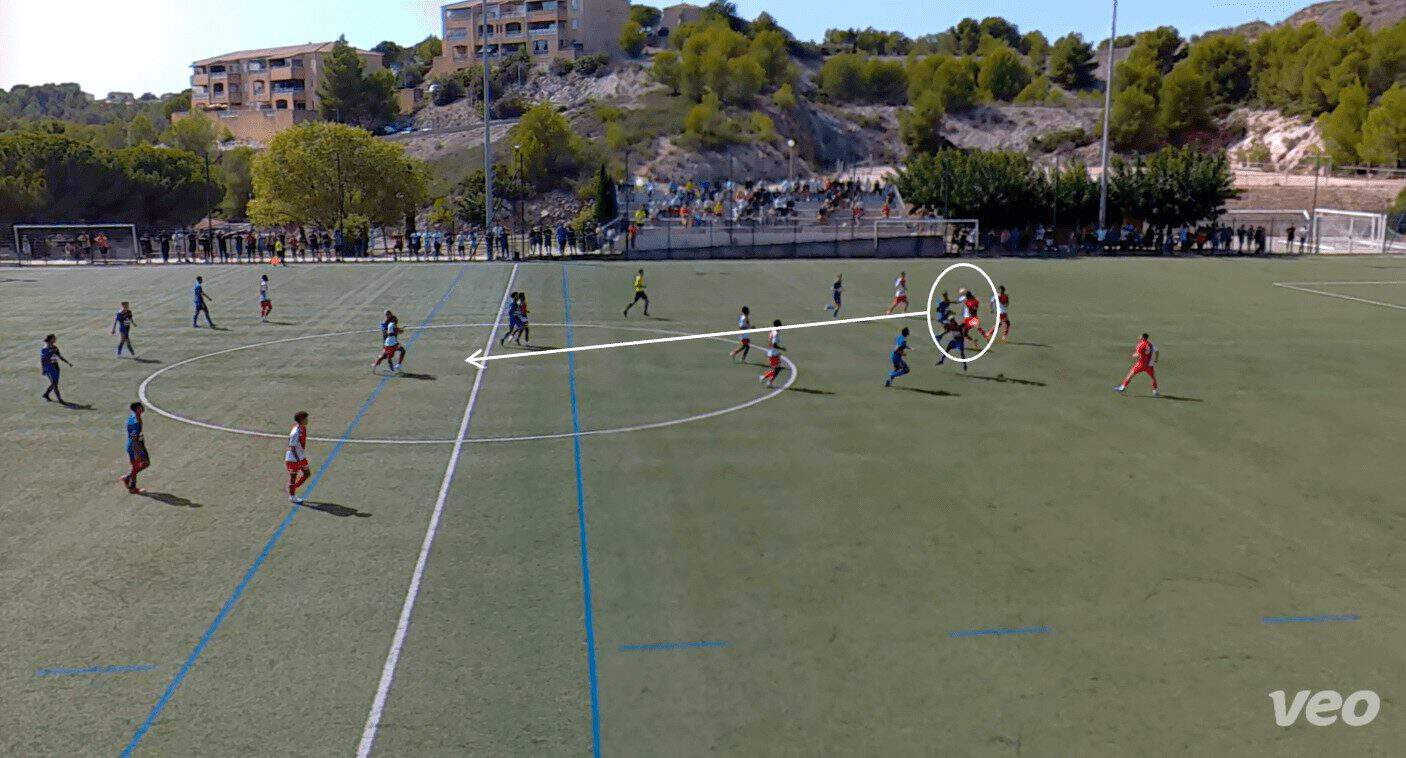
Standing at 1.98 metres tall, it’s no surprise that Nibombé is mainly utilised as a centre-back, although he can also play as a defensive midfielder. His height gives him quite the advantage in the aerial duels; the young defender wins 2.3 per 90 during his short time at Monaco U19. He watches the flight of the ball and judges its trajectory well. As we can see in the example above, he executes good jumping reach and is able to win the ball in the air. He gets a good amount of height and distance on his defensive headers and can mostly find a teammate or head the ball to safety.
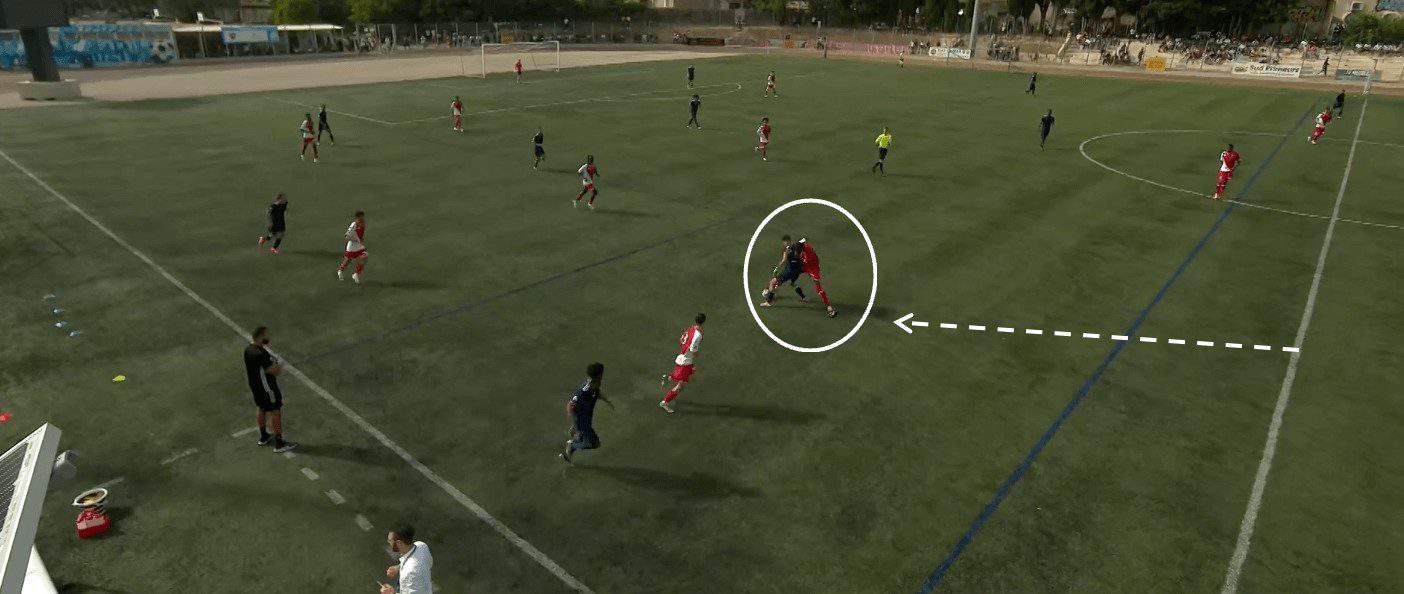
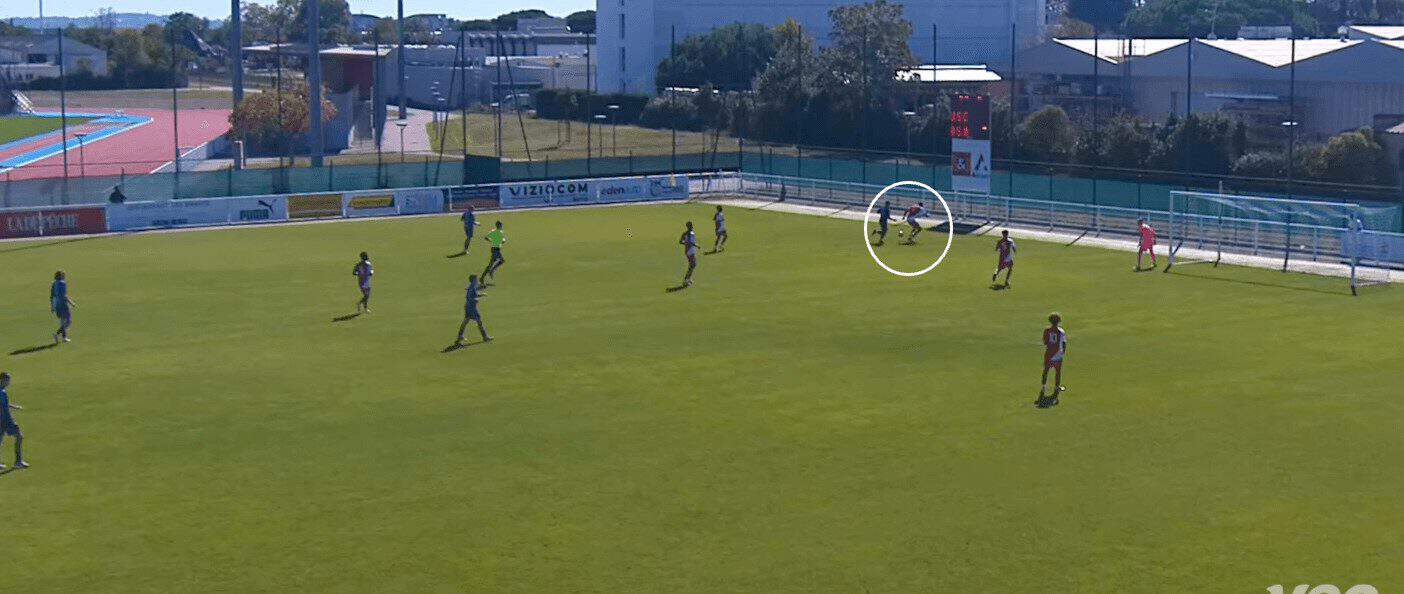
Regarding his ground duels, for the most part, Nibombé does well. He tends to stick tightly to his opponent, as seen in the first image. This is not always bad, as it can force the opposition player into making a backward pass and nullifying the attacking threat.
However, in the scenario above, the opposition player uses the fact that Nibombé is marking him tightly to spin around the Monaco defender and carry the ball forward. Whilst we wouldn’t expect an experienced defender to make such mistakes, it is essential to consider that Nibombe is only 16 years old and still developing as a footballer.
In the second image, he uses his body orientation and physical strength well. Anticipating where the opposition will play the ball, he moves early and positions himself between the player and the ball, which allows him to use his strength to prevent the opponent from reaching the ball.
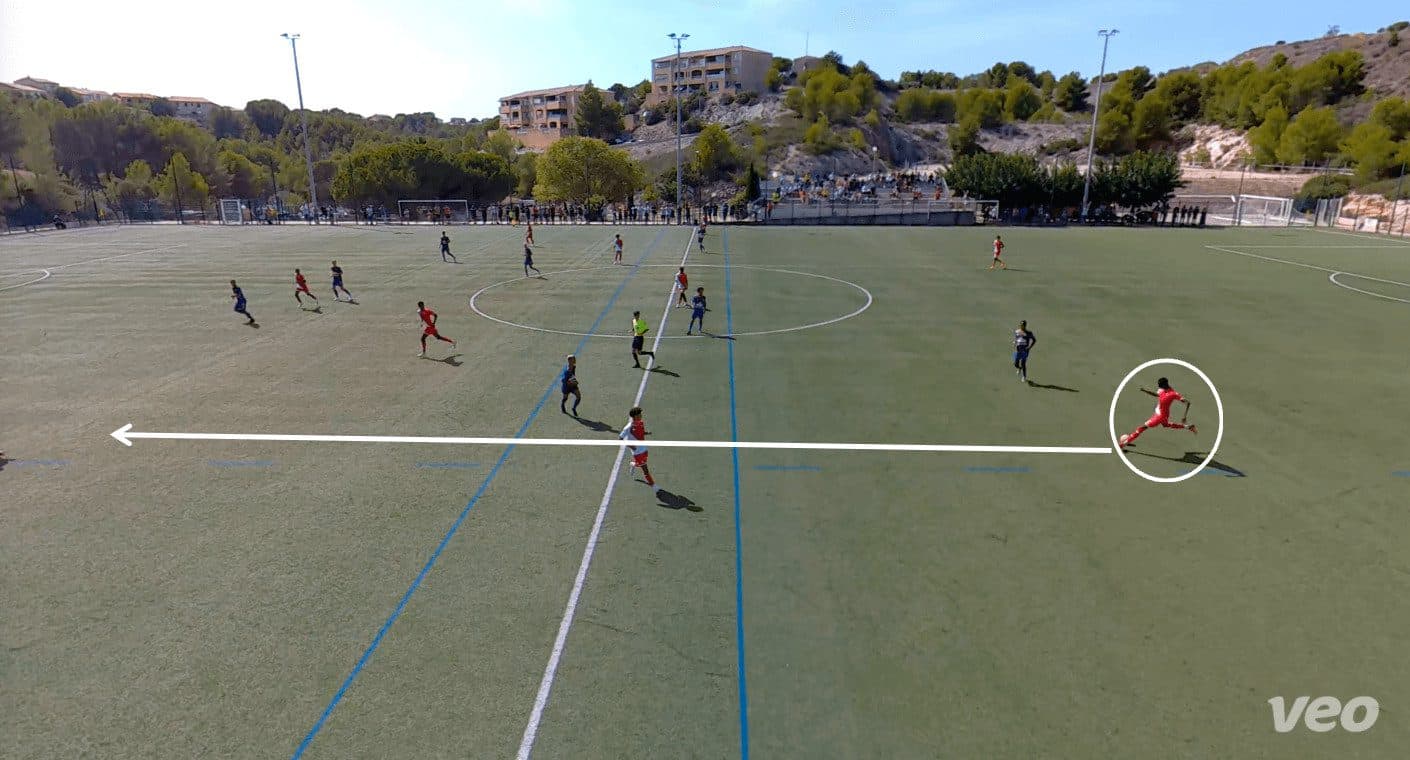
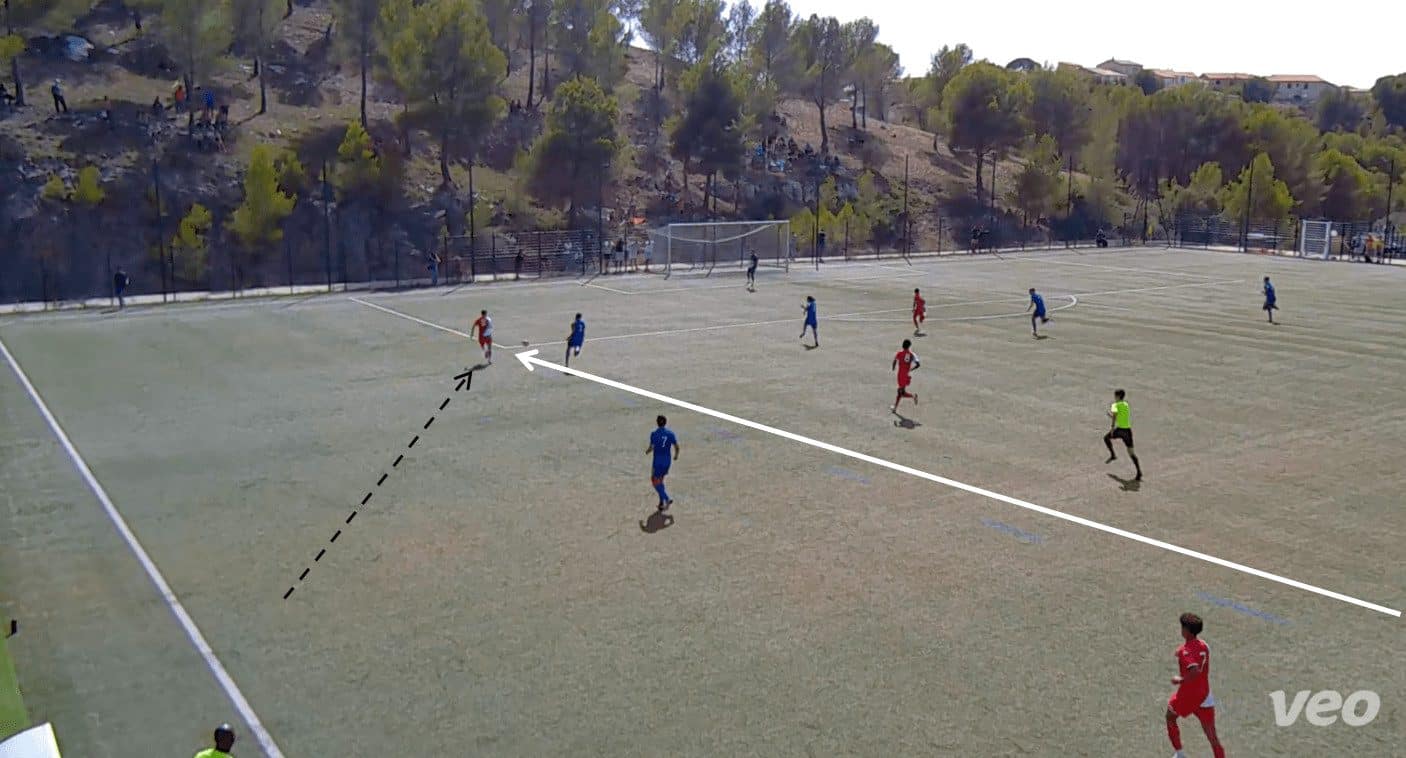
The modern-day defender is expected to possess some good technical abilities when on the ball. Nibombé excels in this area; he constantly scans and assesses what is going on in front of him so he knows where he is going to play the ball when he receives it.
We can see the young defender’s excellent vision and passing range on show in the example above. He already knows where to play the ball when it lands at his feet. He then executes a driven line-breaking pass into the winger’s path, who is running behind the opposition defence.
Nibombé’s capabilities of delivering precise and well-timed defence-splitting passes can effectively initiate swift and incisive attacking movements from the forwards as he enables the team to transition rapidly from defence to attack, catching opponents off guard and creating quick counterattacking opportunities that can lead to goalscoring chances. By effectively bypassing the midfield area and executing accurate forward passes, the youngster can contribute to controlling the tempo of the game and keeping the opposition on the back foot.
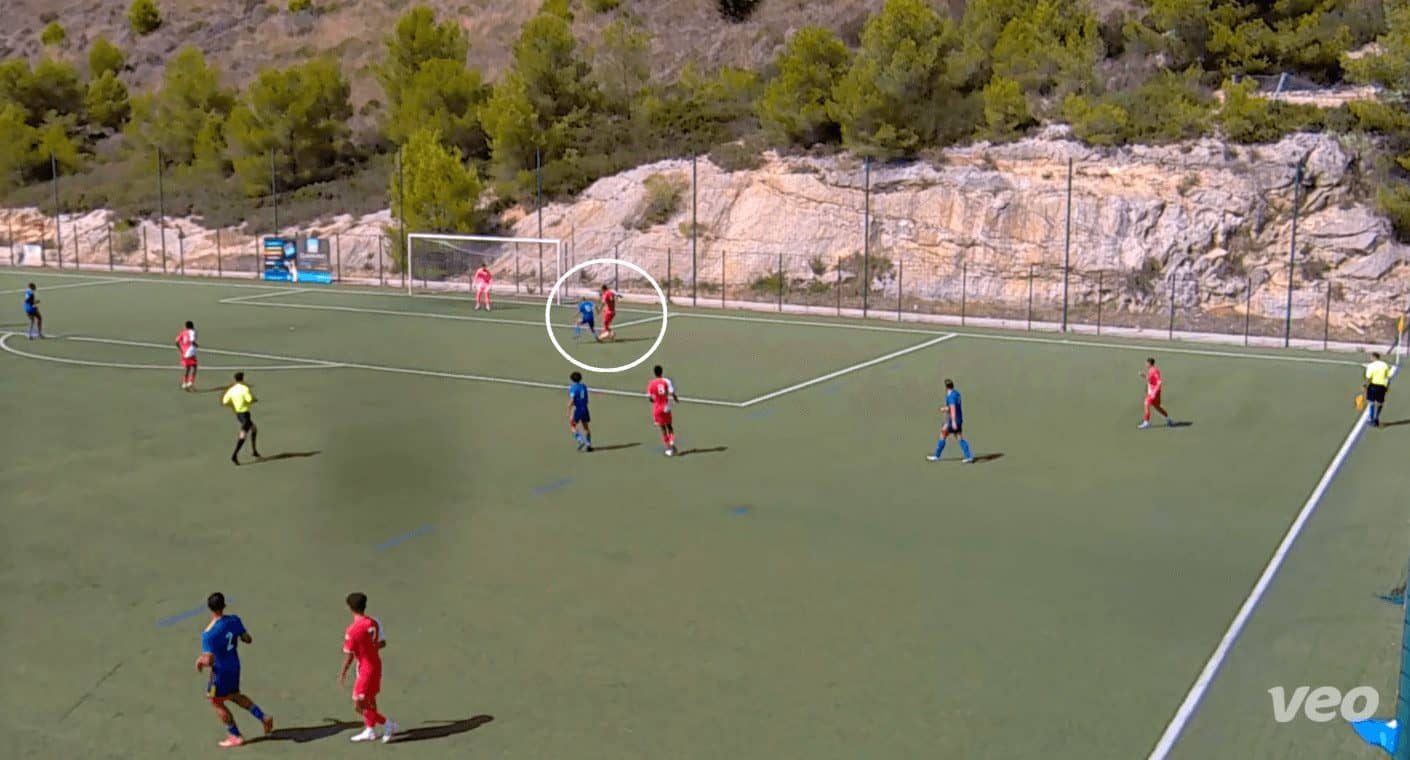
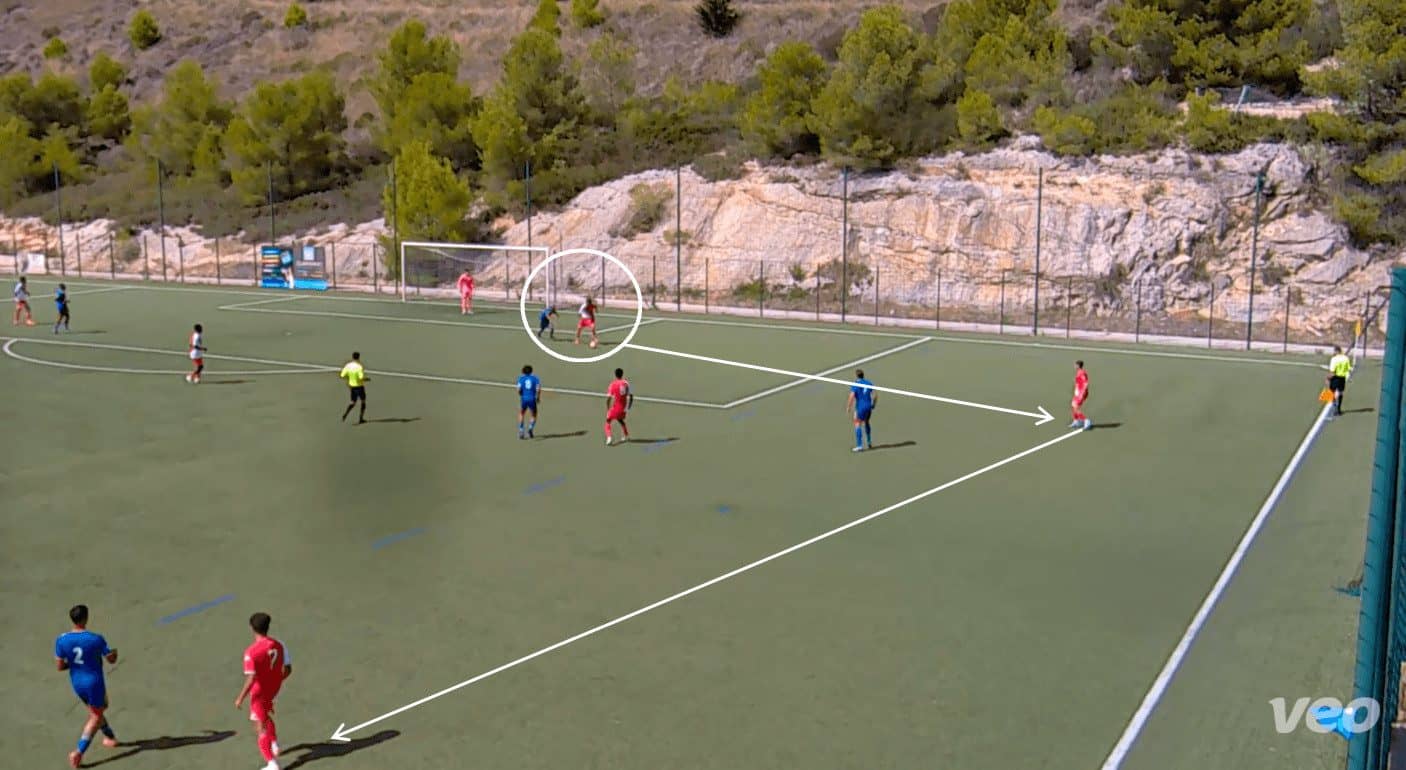
Additionally, for the most part, Nibombé remains calm when under pressure. There are a few misplaced passes when the opposition is executing an intense press, but he is only 16, so we must expect such instances to occur.
Here, we can see that he calmly uses his agility to drag the ball back across him and change direction when under pressure. This creates enough space for the Monaco defender to get his head up and play a pass to a teammate. This ability to remain calm and composed on the ball will be beneficial when his team are looking to retain possession despite being under pressure. Moreover, considering his height, he is swift and agile, which means he offers an excellent physical profile as a centre-back.
Aladji Bamba
The final player we are going to highlight in this scout report is 17-year-old defensive or central midfielder Aladji Bamba. When playing as a defensive midfielder, Bamba’s primary task is to shield the defence and cut out opposition attacks. However, he will look to get into positions that allow him to recycle possession in the attacking phase. When lining up as a central midfielder, as we would expect, he has more licence to get further forward into goalscoring positions.
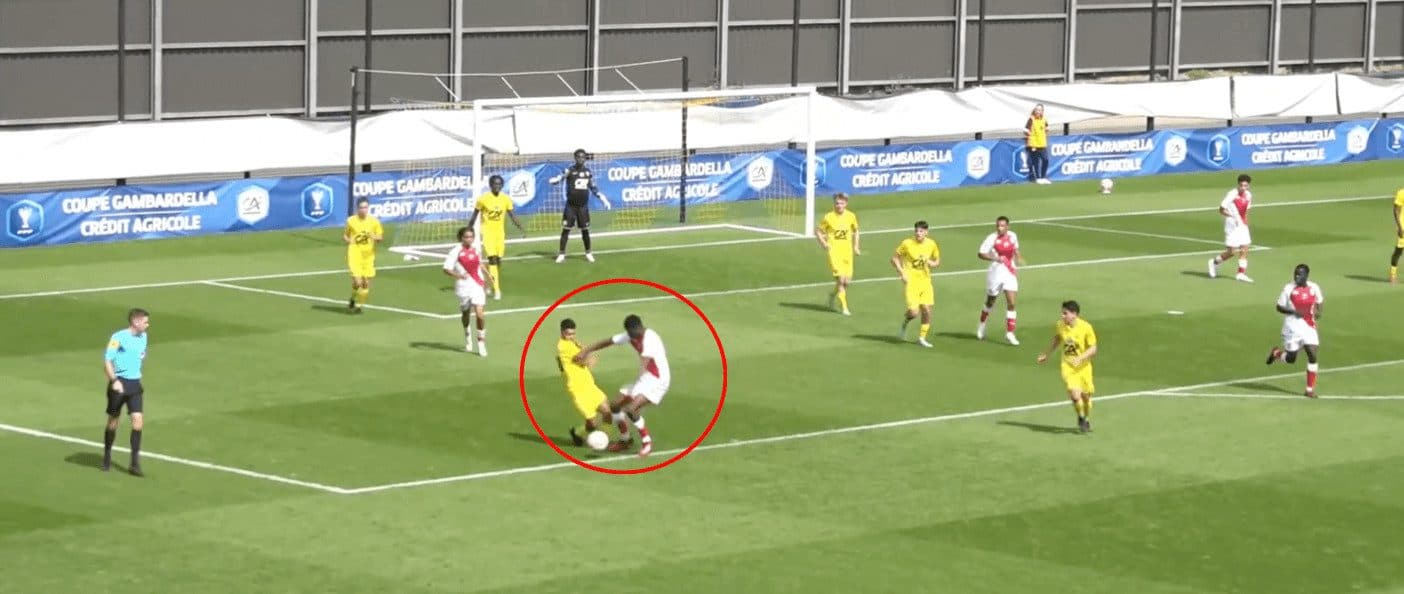
Defensively, Bamba does well in most of his ground duels. He rarely goes to the ground and commits fouls. Instead, he opts to remain on his feet and use his strength, positioning and body orientation to regain possession. The example above demonstrates the midfielder’s ability to safely use his strength to get a foot to the ball before the opponent who attempts to win a penalty rather than duel with Bamba. He calmly regains possession and looks to play a forward pass.
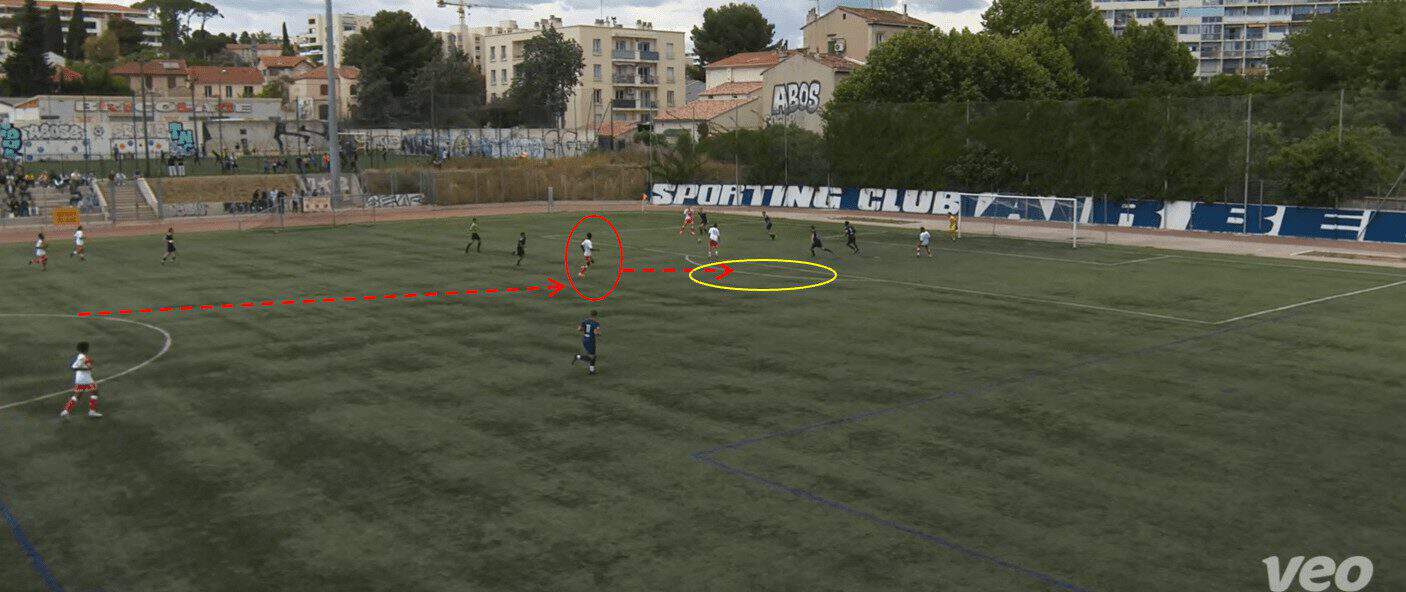
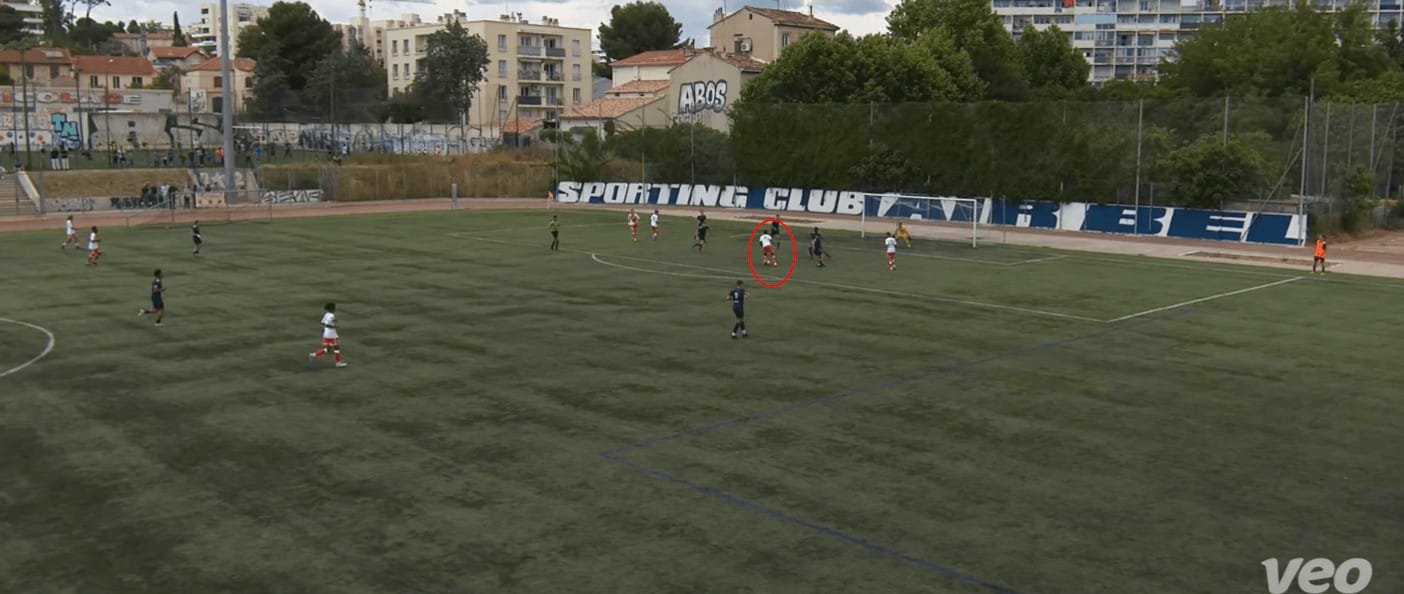
In this scenario, we can see that Bamba is making a late run to the edge of the penalty area. This is something that he does quite frequently in the attacking phase. By arriving late at the edge of the area, Bamba adds an extra dimension to the team’s attacking play. This movement can catch the opposition’s defence off guard, as he becomes an unexpected goalscoring threat.
Consequently, this forces the opposition defence into deciding whether to leave the players they are marking in the area to close down Bamba or allow him to get a shot on goal. In this example, the winger passes the ball into Bamba’s path and rather than hit a first-time shot under pressure with his favoured right foot; the midfielder opts to turn away from his opponent and shoot with his left foot, still forcing a save from the goalkeeper.
Moreover, by positioning himself on the edge of the area, Bamba ensures that he is on hand to recycle possession. This means that the opposition will have difficulty launching a counterattack, as when they clear the ball, the Monaco U19 midfielder can get there first and help his team sustain their attack.
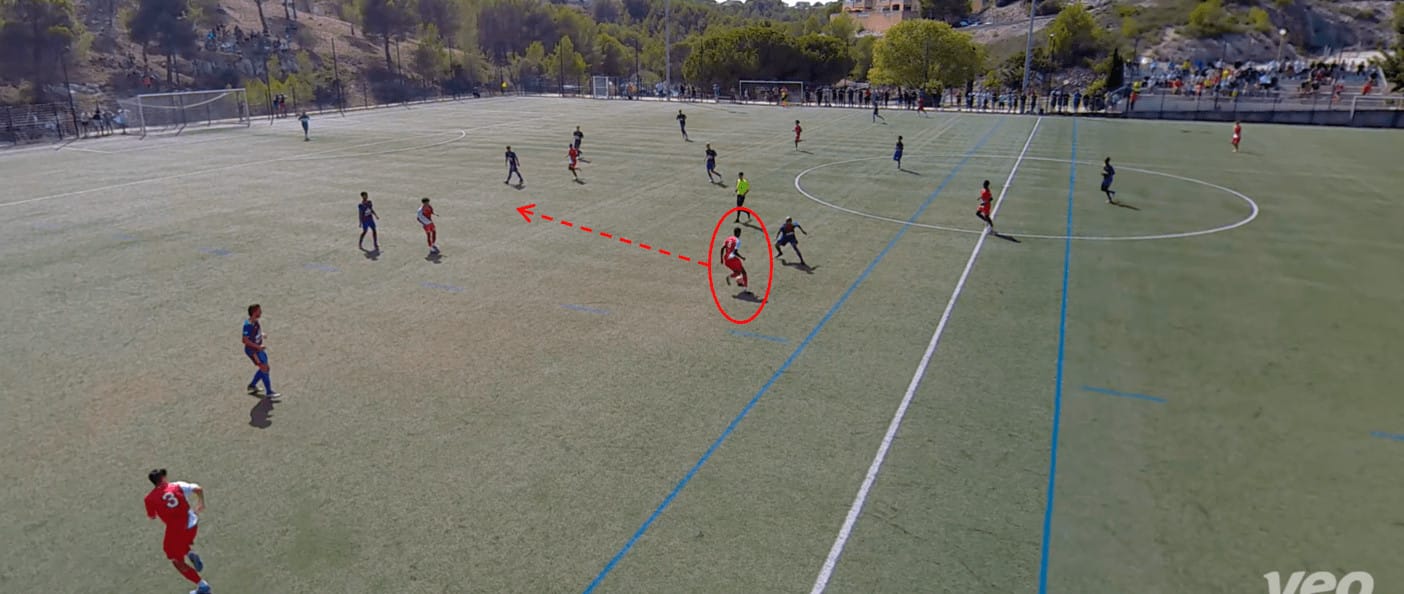
Although Bamba will primarily look to progress the ball by playing relatively short but effective forward passes, averaging 11.3 per 90. Occasionally, he will look to drive the team forward by carrying the ball himself, especially if he receives a pass and can see open space ahead of him.
In the example above, Bamba receives the pass and uses his first touch to ensure his opponent can’t get to the ball. He then carries it into the space ahead. He takes pretty long strides when dribbling, enabling him to cover the ground quickly. Additionally, he understands when to release the ball and does not hold onto it for too long.
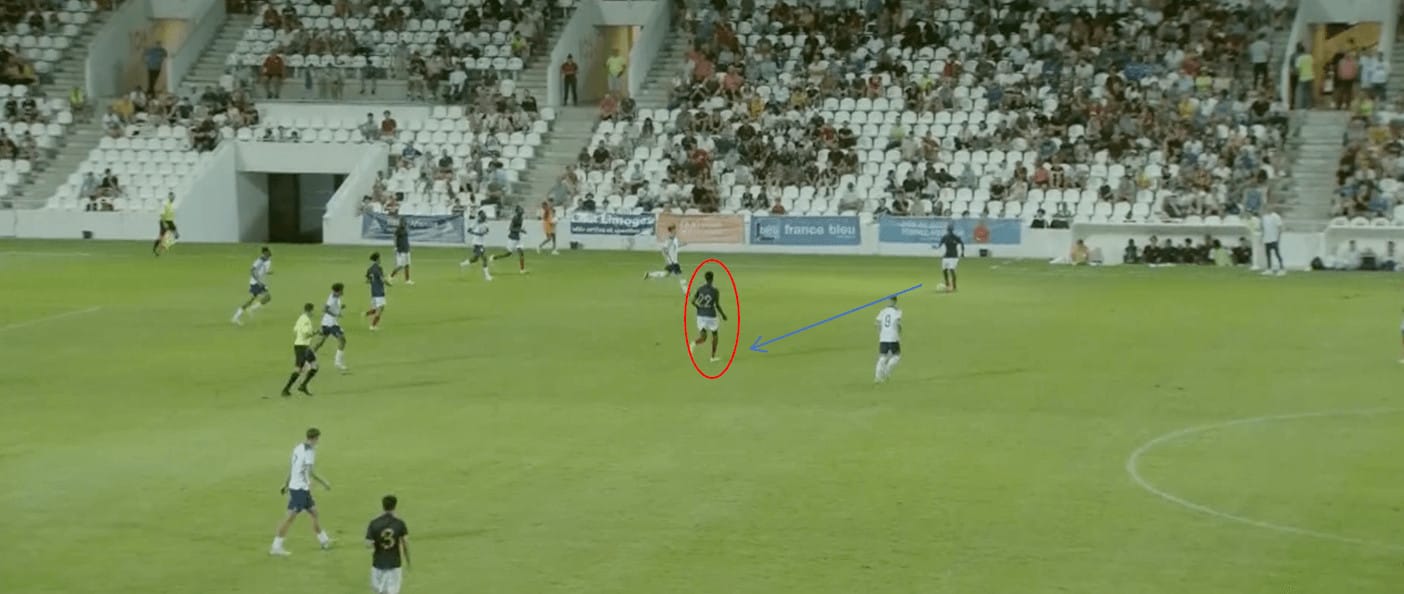
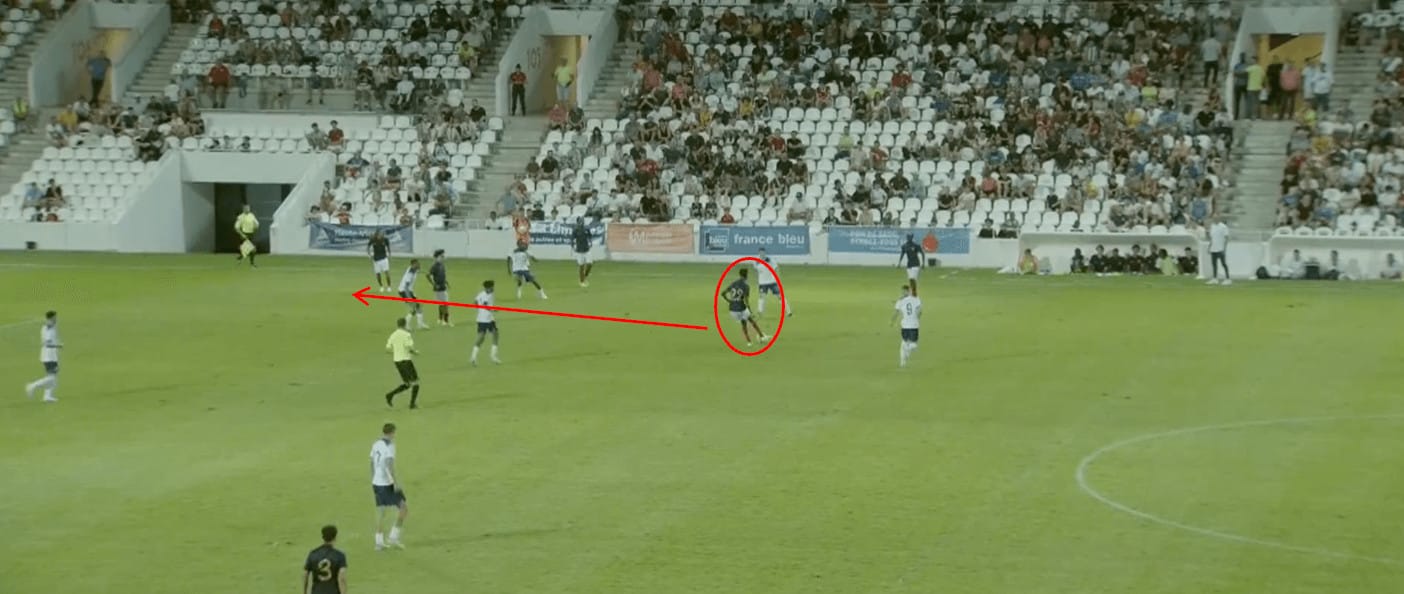
Furthermore, Bamba does demonstrate his ability to play line-breaking passes, which play in his teammates looking to make runs behind the opposition defensive line. Here, we can see Bamba in a recent game for France U18. Bamba finds himself in space as France are looking to build an attack. Upon receiving the ball, the midfielder plays a first-time pass, which bypasses three opposition players and lands in the path of his teammate, who is looking to make a run into the penalty area from the wide area.
Before receiving the ball, Bamba scans the pitch to assess where his teammates and opponents are in relation to himself. Realising he has time and space, he decides to execute this pass, which immediately provides his team with a greater attacking impetus and opportunity to create a goalscoring opportunity. With an 87% pass accuracy, he is mostly reliable in possession and will most likely make good decisions in the future.
Conclusion
Eliesse Ben Seghir is probably the most famous academy graduate of recent years, but he certainly won’t be the last. Monaco has a plethora of talented youngsters within its ranks. In this analysis, we have highlighted three players to look out for, but in truth, there are many. Some other names to keep an eye out for include Soufian Awragh, Pape Cabral and Joris Silvente.
Out of the three players mentioned in this scout report, Saïmon Bouabré is probably the player who is most ready for the first team at present. He is currently playing in the U21s, so it is not unthinkable that he might get some minutes in the first team either this season or next.





Comments